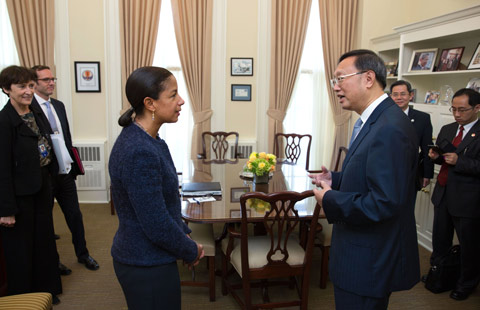General aviation is ready for takeoff
Updated: 2014-10-23 12:04
By Paul Welitzkin in New York(China Daily USA)
|
||||||||
Personal-aircraft sales and the general-aviation market in China are poised to grow as the country eases restrictions that have hampered the industry, according to aircraft manufacturers.
In particular, new rules on flight permit procedures and low-altitude airspace management - 1,000 meters or below -- are likely to open a new chapter for general aviation in the country, they said.
General aviation typically refers to relatively small, privately owned - and often business-related - aircraft, in contrast to commercial airliners or military planes.
China initiated new flight approval procedures in 2013. Under the new regulations, general aviation flights no longer need advance applications and approvals from authorities except in special circumstances such as flying through restricted zones and conducting aerial photography of military facilities.
Andrew Ponzoni, senior communications manager for Dassault Falcon told China Daily Wednesday that this has helped to boost general aviation activities in the country. Before the new regulations, business travelers sometimes had to wait two to three weeks to obtain a permit to fly from Shanghai to Beijing, for example. "That wasn't very conducive for effective business travel," said Ponzoni. "Travel that can get a person from one location to another quickly is an essential element in today's business world."
Ponzoni said that Dassault is proof of the potential for the general aviation market in China. "In 2006 we sold our first plane in China. By 2011, China represented our largest worldwide market for new aircraft sales," he said.

He said China is now the second largest market for sales of his company's top-of-the-line business jet, the Falcon 7X, behind the US. Dassault said sales in China were so strong the company relocated its international sales office to Beijing in 2010. Shortly after Dassault began to build a customer-service infrastructure in the country that includes a service center and a parts warehouse in Shanghai.
Restrictions on use of low-altitude airspace have limited the development of the general aviation industry in China as most civil flights operate in the low-altitude airspace below 1,000 meters. A new regulation for low-altitude airspace management that is expected to ease restrictions for private aircraft use of airspace is expected to be unveiled by the end of the year in China.
While that will be a positive step for general aviation, Steve Cass, vice-president of technical marketing and communications for Gulfstream Aerospace Corp, said more needs to be done.
"The Chinese authorities recently opened up the low-altitude airspace, which is a positive step for general aviation. Unfortunately, this improvement doesn't help most business jets like Gulfstream that cruise up to 15,000 meters. Gulfstream continues to work with the CAAC (Civil Aviation Administration of China) and other government authorities to address the airspace regulations at the higher altitudes. Relaxing airspace restrictions at the higher altitudes will lead to more direct routings and will enable our aircraft to operate at optimum altitudes for greater fuel efficiency," he said in an email statement to China Daily.
Cass said one way to expand general aviation in China is to create small general aviation airports and provide more slots at larger commercial airports. "One of the major benefits of general aviation is to have the flexibility to depart at your own schedule. Right now, operators are adapting their flight schedules to accommodate the limited number of departure slots," he said.
Airbus Helicopters, the world's largest civil helicopter manufacturer, said it expects China to become its biggest global market within six years, according to a Reuters report on Tuesday.
paulwelitzkin@chinadaiulyusa.com

 Veep and CEO
Veep and CEO
 US Healthcare workers attend Ebola educational session
US Healthcare workers attend Ebola educational session
 Kate makes first public appearance after pregnancy
Kate makes first public appearance after pregnancy
 Chinese may go after California high-speed rail project
Chinese may go after California high-speed rail project
 Terracotta warriors attract celebrities around the world
Terracotta warriors attract celebrities around the world
 US-China solar pact holds big potential: Analyst
US-China solar pact holds big potential: Analyst
 Top 10 richest women in China
Top 10 richest women in China
 Yang Jiechi meets with US National Security Advisor
Yang Jiechi meets with US National Security Advisor
Most Viewed
Editor's Picks

|

|

|

|

|

|
Today's Top News
General aviation poised to grow in China
Chinese train maker wins Massachusetts contract
Ottawa police say male suspect in attack and soldier are dead
Johnson & Johnson Plans Ebola Vaccine Testing
China's space launch to pave the way for lunar probe
Shooting locks down Canada's parliament
Book tells story of 'comfort women'
US-China solar pact holds big potential: analyst
US Weekly

|

|






